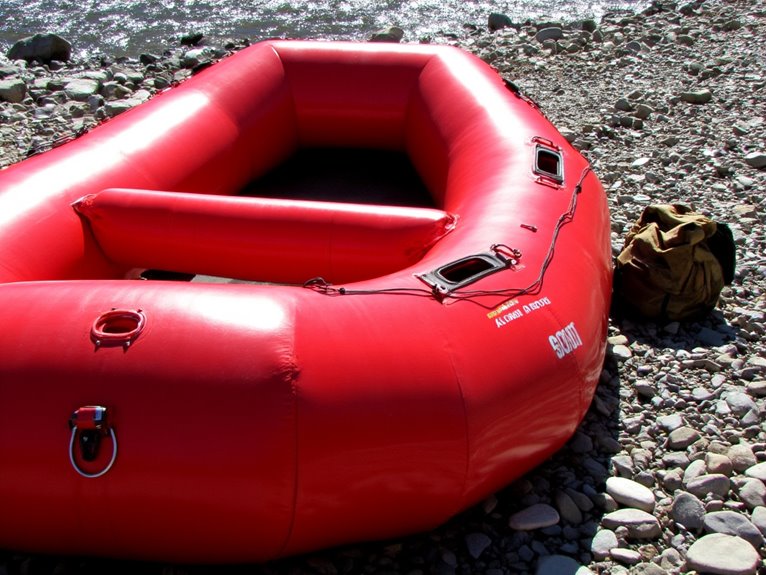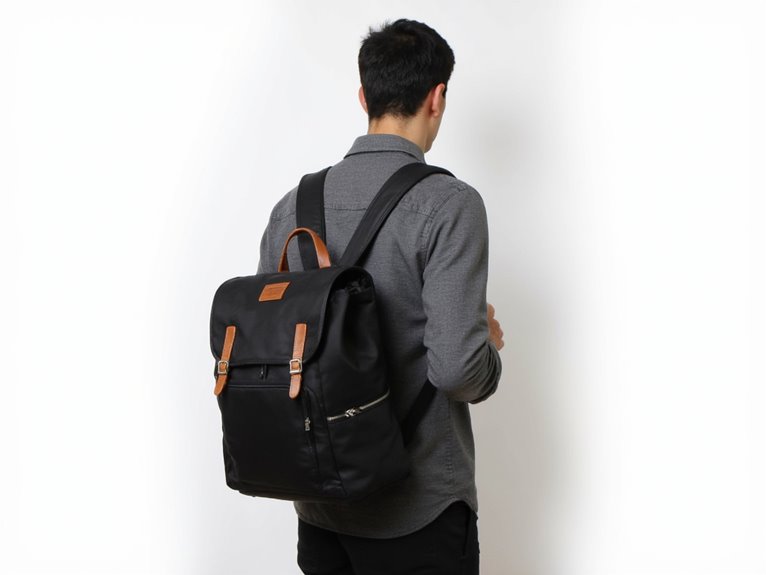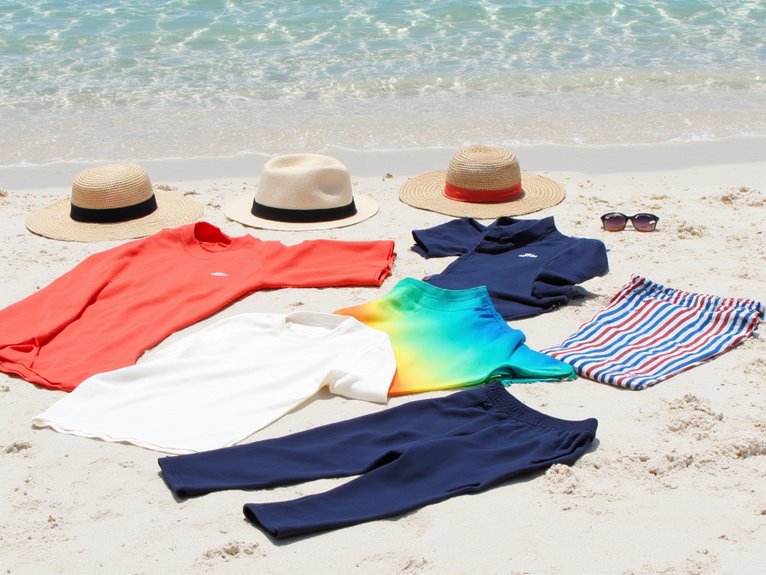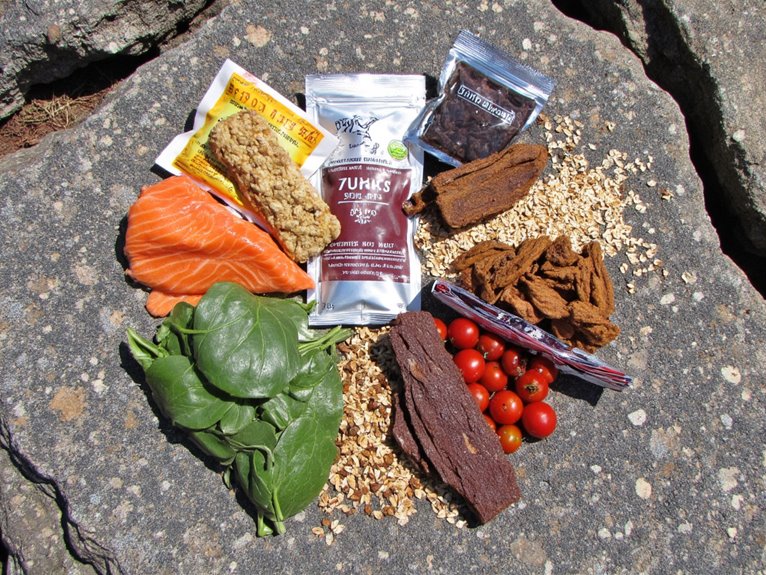What to Look for in a Packraft?
When choosing a packraft, you’ll need to evaluate five core aspects: material durability, weight-to-performance ratio, safety features, hull design, and storage capacity. Look for TPU-coated nylon construction with welded seams, denier ratings of 210 for tubes and 840 for floors, and multiple air chambers for safety. Consider your intended use – whitewater models feature thicker materials and self-bailing floors, while flatwater designs prioritize lightweight efficiency. Understanding these technical specifications will guide you toward the best packraft selection.
We are supported by our audience. When you purchase through links on our site, we may earn an affiliate commission, at no extra cost for you. Learn more. Last update on 4th December 2025 / Images from Amazon Product Advertising API.
Notable Insights
- Choose TPU-coated nylon packrafts with welded seams and high denier ratings for optimal durability and water resistance.
- Consider hull design and rocker profile that matches your intended use, whether for whitewater or flatwater activities.
- Look for multiple air chambers and self-bailing features to enhance safety and stability on the water.
- Evaluate weight-to-durability ratio based on your adventure needs, with typical packed sizes around 24″x16″x5″.
- Check load capacity specifications, ranging from 159-330 pounds for solo to tandem models respectively.
Material Quality and Construction
Durability stands at the forefront of packraft construction, where material selection can make or break your adventure. When evaluating fabric strength, look for denier ratings of 210 for tubes and 840 for floors, which provide ideal strength-to-weight ratios. TPU coatings on high-count nylon enhance water resistance while maintaining flexibility. Avoid packrafts made with toxic PVC materials as they are heavier and weaker than TPU alternatives.
Choose packrafts with 210 denier tubes and 840 denier floors for optimal durability without excess weight in challenging waters.
Construction techniques play a significant role in your packraft’s longevity. Look for double-sided coatings on floors and single-sided on tubes, with welded seams for maximum water tightness. Regular inspection of tubes is essential since catastrophic blowouts can occur from dragging in shallow water.
Premium components like TIZIP zippers should be properly integrated through handcrafted assembly. You’ll want to verify that the manufacturer employs thorough testing phases and maintains consistent quality standards. Modern packrafts featuring carbon fiber seats deliver enhanced performance and comfort for serious adventurers.
The combination of ballistic nylon floors and PU laminates offers superior puncture resistance and durability for challenging conditions.
Weight vs. Durability Trade-offs
While quality materials form the foundation of a great packraft, finding the ideal balance between weight and durability presents a key challenge for buyers.
You’ll need to reflect on how your intended use affects packing efficiency and load management requirements. High-performance models like the Alpacka Raft Expedition offer 350-pound load capacity while maintaining excellent portability. Lighter packrafts offer excellent portability but demand careful handling to prevent damage.
TPU-coated nylon provides superior durability while maintaining a favorable strength-to-weight ratio compared to heavier PVC alternatives. Classic range packrafts like the MRS Microraft provide an optimal balance of portability and robustness. However, you’ll pay more for these advanced materials.
When selecting your packraft, evaluate the specific demands of your adventures. Multi-day trips requiring extensive portage benefit from lighter designs, while frequent whitewater use calls for more robust construction. Keep in mind that premium TPU fabrics and reinforced construction add weight but greatly extend your packraft’s lifespan through enhanced tear and abrasion resistance.
Size and Portability Features
When choosing your packraft, you’ll need to weigh the benefits of compact storage against load capacity requirements.
A typical packraft condenses to roughly 24″x16″x5″, making it easily transportable in a backpack, while expanded dimensions of 93″-120″ length and 33″-38″ width provide ample space for paddling.
Your decision should account for both packed size and weight capacity, which ranges from 159 lbs for solo models to over 330 lbs for tandem versions. Models like the Tango tandem packraft offer specialized designs that accommodate two paddlers while maintaining efficient portability. Consider that sized models provide a true-to-size fit for optimal performance on the water.
Compact Storage Solutions
Selecting a packraft with smart storage solutions can transform your wilderness experience from cumbersome to comfortable.
You’ll find two primary storage options: internal storage systems (ISS) with waterproof TiZip technology that keeps gear dry inside the pontoons, and external storage using bow straps and sidebags for quick access. Gear pile-up on the front of your raft can significantly limit your field of view while paddling. The Roll Top Closure system offers reliable sealing for extended trips without losing pressure.
When choosing your storage configuration, consider the trade-offs. Internal storage systems lower your center of gravity and protect gear from the elements, but you can’t access items while paddling.
External storage offers immediate accessibility but exposes equipment to water and affects balance.
You’ll want to evaluate how you’ll use your packraft – if you’re planning longer expeditions, opt for models with ISS, while day trips might be fine with external attachments.
Weight vs. Capacity Tradeoffs
Beyond smart storage solutions, a packraft’s weight and capacity specifications shape its real-world performance. You’ll need to balance maximum capacity range with ideal handling characteristics. While packrafts can technically carry loads beyond their recommended limits, this greatly impacts maneuverability and safety. Testing in controlled environments first helps determine optimal weight distribution for your specific packraft model. Maximum capacity directly influences paddling fatigue during extended trips.
| Capacity Level | Weight Impact | Performance Effect |
|---|---|---|
| Standard Load | 0-20 lbs/person | Best handling |
| Medium Load | 20-30 lbs/person | Enhanced stability |
| Heavy Load | 50+ lbs/person | Reduced agility |
Weight distribution plays an essential role in performance across water conditions. Consider that heavier materials like 1,000-den PVC add durability but increase overall weight to around 18 lbs, while lighter TPU materials (210d-840d) maintain professional durability at 4-6 kg. Tube diameter choices also affect weight – smaller 10.6″ tubes reduce weight by 0.4 lbs compared to 11.7″ tubes but offer slightly less stability.
Essential Safety Components
When selecting a packraft, you’ll want to prioritize models with multiple air chambers that provide redundant flotation if one chamber fails.
The self-bailing floor features, consisting of strategically placed drain holes or mesh panels, help prevent water accumulation and maintain stability in rough conditions.
These safety components work together as critical backup systems, much like the redundant systems in aviation, ensuring you’ll stay afloat even if something goes wrong. Having a reliable repair kit on hand allows you to quickly address any punctures or damage that might compromise these safety features. Implementing proper layering for warmth is crucial when testing these safety features, as cold water poses significant risks during equipment trials.
Multiple Air Chamber Design
The multiple air chamber design represents one of the most critical safety features you’ll want in a packraft.
These chambers provide essential redundancy, ensuring you’ll stay afloat even if one chamber becomes compromised. Modern packrafts use durable TPU and nylon materials for their chambers, with reinforced seams to maintain airtight integrity. Having multiple chambers is especially important since single air chambers are the standard in most basic packrafts, creating a significant safety risk if punctured. The evolution from early survival gear to modern recreational use has led to the development of high-tech materials that revolutionized chamber design and durability.
When evaluating chamber design, consider these key factors:
- Number of chambers – more chambers provide better safety redundancy
- Chamber material thickness – affects durability and weight
- Seam construction – determines long-term air retention capability
While packrafts typically have fewer chambers than inflatable kayaks, you’ll find this simplified design offers advantages in portability and maintenance.
The key is selecting a model that balances safety features with your specific needs for weight and intended use.
Self-Bailing Floor Features
Self-bailing floor features represent a crucial safety component you’ll need to evaluate in any packraft purchase. The primary self bailing advantages include automatic water removal through strategically placed drainage holes, which maintain your packraft’s buoyancy in challenging conditions.
These holes are typically protected by shields to reduce water resistance during travel. The advanced 840d Kevlar-Nylon blend construction offers superior durability while maintaining excellent drainage properties. The Leafield D7 valves ensure precise inflation control for optimal floor performance.
The floor’s construction plays a significant role in drainage efficiency. You’ll find options like inflatable floors with drop stitch construction, which enhance structural integrity while allowing water to drain effectively.
These floors are typically made from durable urethane-coated nylon and feature reinforced seams sealed with specialized tape.
When evaluating floor designs, consider how the drainage system works with your intended use, as inflatable floors may affect bailing speed despite providing additional flotation benefits.
Hull Design and Performance
Understanding packraft hull designs has become increasingly sophisticated, moving far beyond basic tube diameter considerations.
Modern packraft design transcends simple measurements, embracing sophisticated engineering to create specialized, purpose-built watercraft.
You’ll find two main hull variations: the Classic Hull, which prioritizes weight savings and tracking performance, and the Rally Hull, featuring aggressive rocker designs for enhanced wave handling. Popular designs like the Nomad S1 are ideal for still water adventures.
When evaluating hull performance, consider these key factors:
- Rocker profile – Higher rocker improves maneuverability in whitewater but reduces tracking efficiency
- Hull shape – Extended sterns provide better directional stability while wider tubes increase buoyancy
- Cargo capacity – Hull design affects how gear weight impacts stability and overall performance
Your hull choice should match your intended use. The Cargo Hull models offer maximum buoyancy and stability for those needing to carry heavy loads.
The Classic Hull excels in flatwater conditions where straight tracking matters most, while the Rally Hull’s design helps you navigate challenging whitewater with greater control and responsiveness.
Comfort and Ergonomic Features
When choosing a packraft, you’ll want to evaluate the seating support system‘s ability to provide proper posture alignment and pressure distribution through features like inflatable cushions or mesh designs.
A well-designed thigh grip system lets you maintain maintain control while maneuvering through technical water, with adjustable straps that secure your lower body without restricting movement. Users should expect a brief verification process when testing these components to ensure proper fit and functionality. The innovative cargo sling system allows you to customize load positioning for optimal balance and comfort during extended trips.
The packraft should offer multiple position adjustment points, including adjustable seat height and backrest angle, to optimize your paddling ergonomics across varying conditions and load weights.
Seating Support Systems
A packraft’s seating system serves as the vital interface between paddler and boat, directly impacting comfort, control, and performance on the water.
You’ll want to focus on proper seat stability and ergonomic positioning to maximize your paddling efficiency.
Consider these essential seating system features:
- Forward seat placement for ideal weight distribution and directional stability
- Inflatable support with adequate cushioning to protect your tailbone and elevate hips
- Durable backrest options, either inflatable or external back bands, providing essential lumbar assistance
The attachment compatibility of your seating system matters greatly.
Whether you choose a lace-in or toggle system, make sure it’s securely fastened to prevent shifting during paddling.
When properly configured with thigh strap integration, your seating system will enhance control and connection to your packraft.
Thigh Grip Design
The thigh grip system serves as your primary connection point to the packraft, delivering essential control and stability in challenging water conditions.
When evaluating thigh strap applications, you’ll find options ranging from basic 2-point systems to more advanced 4-point configurations with additional knee straps for maximum control in demanding whitewater.
Pay careful attention to thigh strap adjustability features, as proper fit is vital for performance. Look for designs with customizable anchor points and straps approximately 25mm wide, which provide ideal comfort without water absorption.
The best systems offer quick-adjust buckles and non-absorbent materials that won’t get waterlogged during use. You’ll also benefit from designs that can double as shoulder padding when portaging your packraft, making them practical for both on-water performance and transport.
Position Adjustment Features
Beyond effective thigh grips, position adjustment features play a key role in your packraft’s overall performance and comfort.
Your seat adjustment capabilities directly impact your paddling efficiency and control, especially when dealing with varied water conditions and extended trips.
Here’s what you’ll want to look for in position adjustment features:
- Adjustable seat height systems that let you optimize your position relative to the water
- Ergonomic alignment options including backrests and cushioning for proper spinal support
- Cargo optimization features that integrate with seating to maintain balanced weight distribution
You’ll find that proper position height not only enhances your comfort but also improves your paddling technique.
Modern packrafts often incorporate mesh seats and cargo sling designs that work together to elevate your seating position while maintaining stability under heavier loads.
Storage Solutions and Capacity
Modern packrafts come equipped with innovative storage systems that’ll dramatically expand your carrying capacity. Your storage strategies should utilize features like Internal Storage Systems (ISS) and Cargo Fly zippers, which provide secure access to hull chambers while maintaining waterproof integrity.
These systems allow for efficient load management, with some models capable of handling up to 750 pounds in ideal conditions.
You’ll want to take into account both passenger and cargo capacity when selecting your packraft. Single-paddler models typically accommodate up to 260 pounds, while expedition versions like the Ranger can carry 300 pounds of gear.
For best performance, distribute weight evenly using internal dry bags, which serve dual purposes as additional air chambers and organizational tools.
Remember that your packraft’s handling characteristics depend heavily on proper weight distribution and staying within recommended limits.
Valve Systems and Inflation Methods
Selecting appropriate valve systems and mastering inflation methods will impact your packraft’s performance just as much as proper storage and weight distribution.
When evaluating valve types, you’ll encounter options ranging from simple rubber mushroom stems to complex bayonet fittings, each with distinct benefits for air retention and pressure control.
Here’s what you need to take into account:
- Compatibility issues between valves and inflation bags – verify your accessories match your valve type
- Pressure control capabilities – most packrafts operate best around 2.5 psi
- Maintenance tips – regularly inspect valves and keep spare parts handy
While oral inflation works for basic needs, using inflation bags or specialized pumps will help you achieve proper pressure more efficiently.
Think about threaded valves for their widespread compatibility and easy maintenance with readily available replacement parts.
Whitewater vs. Flatwater Capabilities
When choosing between whitewater and flatwater packrafts, you’ll need to take into account their distinct design characteristics and performance capabilities.
Packraft versatility varies greatly between models designed for different water conditions. Whitewater versions feature thicker materials, self-bailing floors, and safety features like thigh straps and spray decks, while flatwater models prioritize lightweight construction and efficient paddling techniques.
Choose your packraft wisely – whitewater models offer robust safety features, while flatwater versions emphasize light weight and paddling efficiency.
You’ll find that whitewater packrafts offer enhanced stability and maneuverability in rapids up to Class III, with some models suitable for Class IV when properly outfitted. Their robust construction withstands impacts and abrasion from rocks.
In contrast, flatwater packrafts excel in calm conditions but aren’t recommended beyond Class I water, as they typically lack drainage systems and advanced safety features necessary for technical rapids.
Maintenance and Repair Considerations
Proper maintenance and repair practices can extend your packraft’s lifespan well beyond its expected durability limits.
Regular cleaning techniques and zipper upkeep are essential components of an effective maintenance routine that’ll prevent costly damage and guarantee reliable performance on the water.
Here are three critical maintenance tasks you’ll need to master:
- Wash your packraft with mild soap after each use, ensuring thorough drying before storage.
- Apply zipper lubricant sparingly to maintain smooth operation and prevent premature wear.
- Store your craft loosely rolled or partially inflated in a cool, dry place away from direct sunlight.
Keep repair kits accessible and learn basic patching methods for field repairs.
For complex issues involving zippers or seams, consider professional servicing to guarantee durable, watertight results.
Weather Protection Features
Since your safety on the water depends heavily on staying warm and dry, robust weather protection features are essential for any packrafting expedition. Your safety gear should include multiple insulation layers and waterproof outer shells that adapt to changing weather conditions. Environmental factors like wind chill and water temperature will determine your specific gear needs.
| Protection Level | Cold Water (<60°F) | Moderate Conditions | Light Rain/Spray |
|---|---|---|---|
| Primary Layer | Dry suit | Rain jacket/pants | Splash jacket |
| Seals/Closures | Latex seals | Adjustable cuffs | Basic closures |
| Insulation | Heavy base layer | Midweight layer | Light layer |
| Wind Protection | Full coverage | Strategic panels | Basic blocking |
You’ll need to match your gear to expected conditions, ensuring your dry suit has proper seals for cold water and your rain gear offers adequate wind protection for milder situations.
Essential Gear Compatibility
The right combination of packrafting gear working together as an integrated system will determine your success on the water. When evaluating paddle compatibility, choose lightweight, collapsible designs that match your height and boat dimensions.
PFD integration requires USCG Type III certification with mesh-back construction for ventilation.
Key gear considerations include:
- Large backpack capacity (50-70L) to accommodate your packraft and camping equipment
- Extensive repair kits with patches, Aquaseal, and spare valves stored in waterproof containers
- Roll-top dry storage bags that securely attach to raft points
Your gear should work seamlessly together, with each component complementing the others. Select items that balance durability with weight savings while maintaining essential safety features and functionality for your specific packrafting needs.
Frequently Asked Questions
How Long Does a Packraft Typically Last With Regular Use?
Your packraft’s longevity typically extends 5-10 years with regular use, though many users report successful operation beyond this timeframe. You’ll maximize lifespan through proper maintenance tips: dry thoroughly after use, store unfolded, and promptly repair minor damage. High-quality models with TPU coatings and reinforced bottoms can withstand hundreds of trips when properly maintained, especially if you’re diligent about avoiding prolonged UV exposure and sharp obstacles.
Can I Use My Packraft in Saltwater Environments?
Yes, you can safely use your packraft in saltwater environments due to their durable, seawater-resistant construction materials like PVC and urethane-coated fabrics. However, you’ll need to follow proper maintenance protocols to guarantee packraft durability. Always rinse with fresh water after each use, thoroughly dry all components, and pay special attention to metal parts and valves. With proper care, your packraft will perform reliably in marine conditions.
What’s the Maximum Weight Capacity for Fishing Gear and Camping Equipment?
You’ll want to limit fishing and camping gear to 20-30 pounds when using the cargo fly system, with a maximum of 50 pounds for ideal handling. Proper weight distribution is essential – secure heavy items low and centered in your packraft using internal gear attachments. While some models can technically handle more weight, exceeding these limits will greatly impact your packraft’s maneuverability and performance on the water.
Are Packrafts Suitable for Winter and Sub-Freezing Conditions?
Yes, packrafts can handle winter conditions when you follow proper winter safety protocols. You’ll need specialized gear like drysuits and thermal protection since packrafts aren’t inherently insulated. Cold weather preparedness is essential – choose models with reinforced materials like 420D nylon TPU and features like self-bailing floors. Monitor tube pressure frequently, as cold temperatures affect inflation. Carry repair kits and be prepared for ice navigation challenges.
How Do Packrafts Compare to Inflatable Kayaks for Long-Distance River Expeditions?
When comparing packrafts to inflatable kayaks for long-distance river expeditions, you’ll find distinct trade-offs. While packraft durability is generally lower due to lighter materials, they excel in portability and multi-sport versatility. Inflatable kayak performance offers superior speed and stability, particularly in rapids, plus more gear capacity. Your choice should depend on whether you prioritize lightweight portability or on-water performance and storage space.
On a final note
When you’re ready to purchase a packraft, you’ll need to balance several key factors. Consider your primary intended use, the materials’ durability versus weight, and essential safety features that match your skill level. Make sure you’ve evaluated hull design, storage requirements, and repair options. Don’t forget to factor in compatibility with your existing gear and the conditions you’ll encounter most often.




